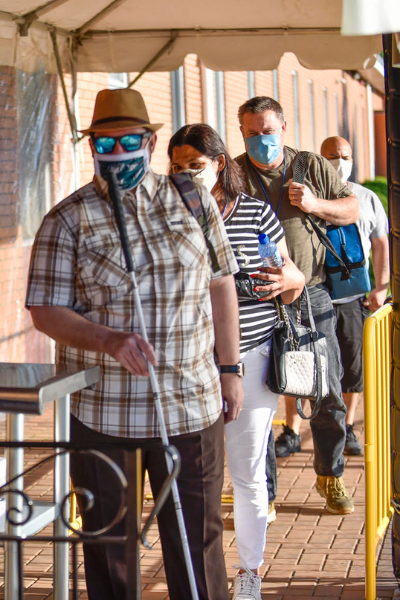The COVID-19 pandemic has changed the way we work and live, but those challenges are exacerbated for people who are blind or have low vision.
Recognizing that studying the effects of a crisis like this one could also have ramifications for other scenarios, such as natural disaster and emergency planning, AFB joined forces in early April 2020 with 15 organizations and companies to study the effects of COVID-19 on adults who are visually impaired in the United States for a report called Flatten Inaccessibility.
The culmination of survey findings from 1,921 U.S. participants shed light on the experiences of blind and low vision individuals regarding access to transportation, healthcare, access to food and supplies, employment, education, and voting.
“We saw a lot of issues that need to be resolved moving forward, but now we have data we can use to develop solutions,” says Stephanie Enyart, chief public policy and research officer for AFB. “The lessons learned from this data can really serve us as a roadmap going forward, because the systemic issues aren’t going away anytime soon unless we all work together.”
A brief sampling of findings:
Transportation – 68% of participants had concerns about transportation, particularly related to safety, restricted access to transportation options (paratransit, public transit, taxis, rideshare), and fears they would not be able to get themselves or loved ones to COVID-19 test sites or healthcare providers if they were to get sick.
Healthcare – 59% of participants felt their underlying health conditions made them particularly vulnerable to COVID-19 complications.
Employment – 47% of participants had concerns about employment, with 38% reporting accessibility problems with at least one of the technology tools needed to do their job from home, and 22% reporting they were unable to access technology at home that was essential for their job.
Education – 47% of parents or caregivers had concerns about their child’s education, with 60% reporting the technology tools they needed to use were not accessible and 90% reporting they received no training in the new technology.
Learn more: afb.org/FlattenInaccessibility
